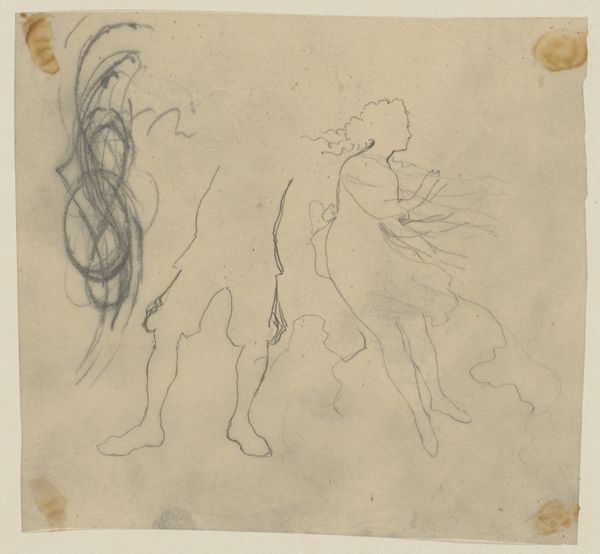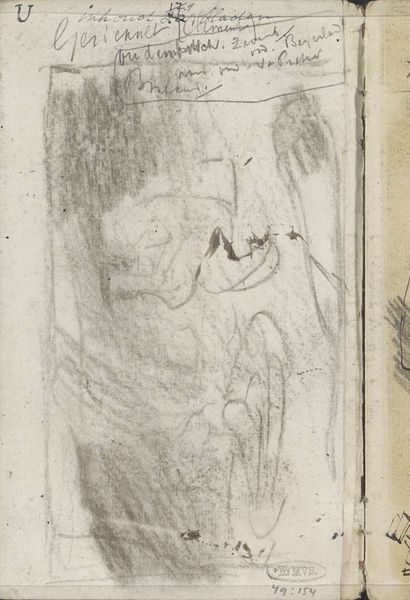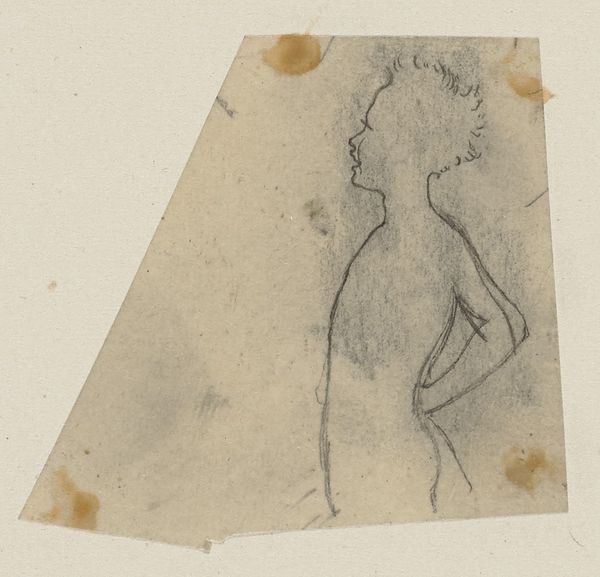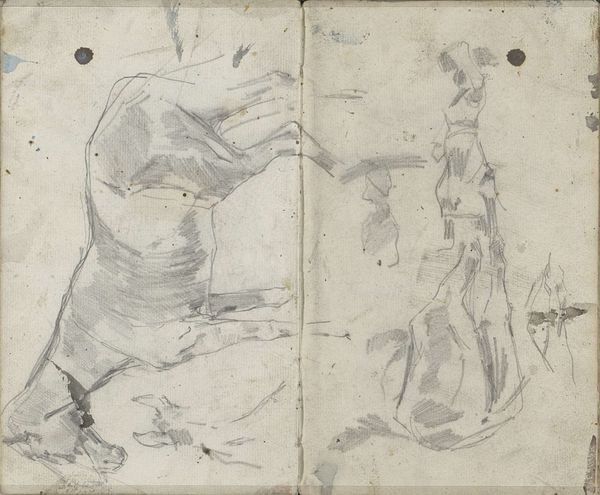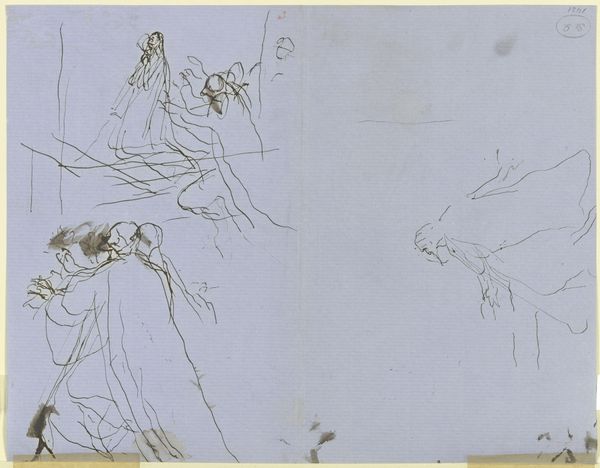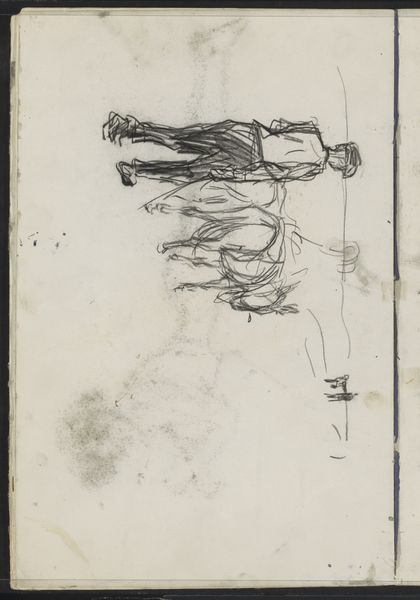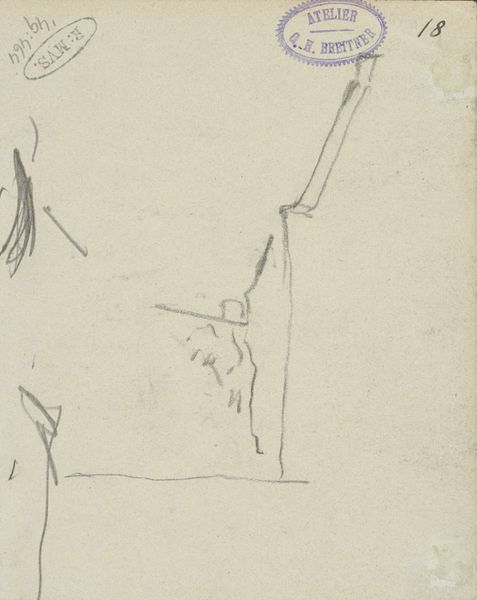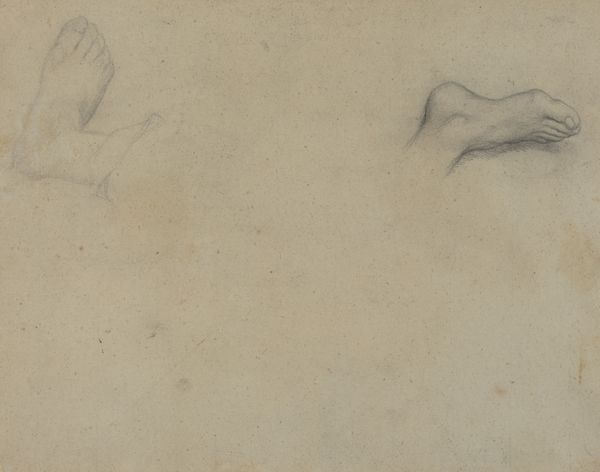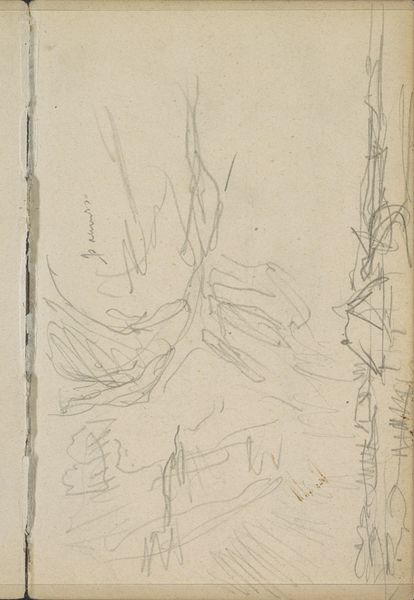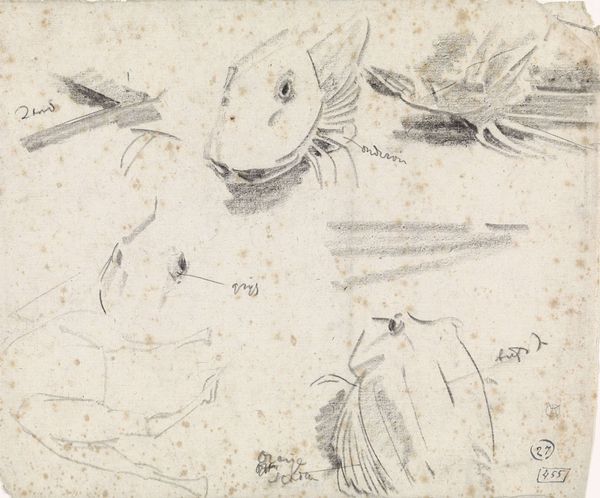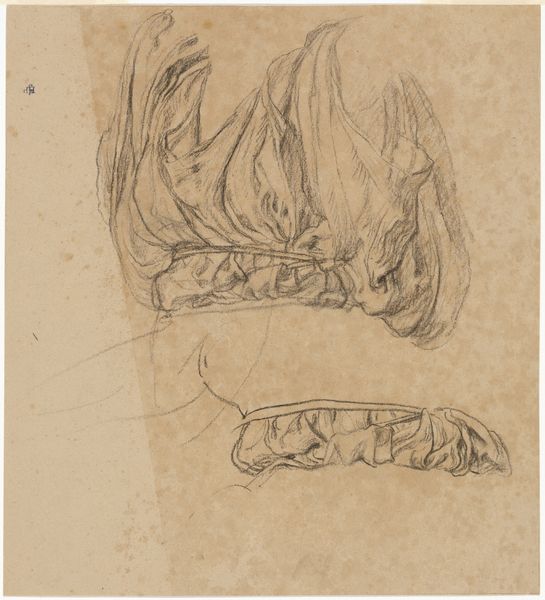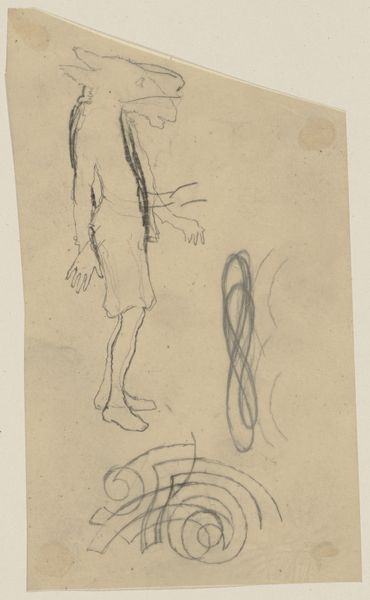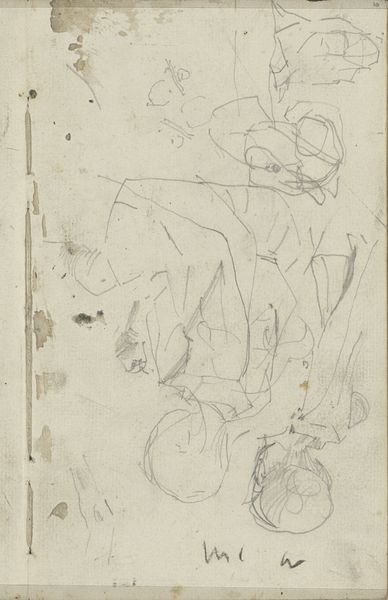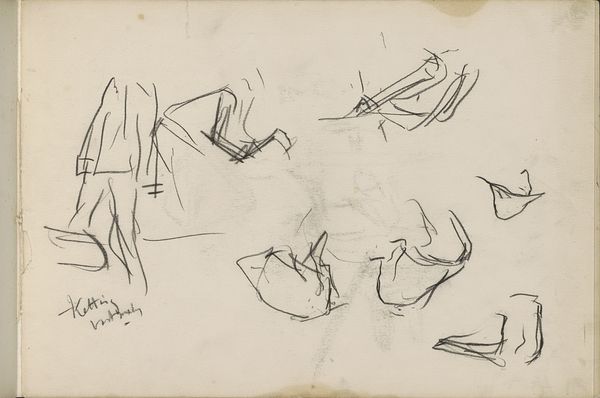
Dimensions: 250 mm (height) x 157 mm (width) (bladmaal)
Curator: We're looking at "To figurstudier (\"Den druknende\"?)" or "Two figure studies (\"The Drowning Man\"?)" by Karl Isakson, created sometime between 1905 and 1907. It's currently held at the SMK, the Statens Museum for Kunst. This is a drawing, primarily done in pencil. Editor: My first impression is one of incompleteness. The ghostly lines and ambiguous forms evoke a sense of unease and perhaps, a hint of morbidity given the possible "Drowning Man" title. Curator: Yes, it’s fascinating how the use of pencil as a readily available, and relatively inexpensive material, lends itself to the exploratory nature of studies like this. We're given two isolated forms. You can clearly make out arm-like shapes, perhaps, but the economical execution really leaves a lot to the viewer's imagination. I can only wonder about the role that this play with form would come to embody in Isakson’s greater artistic body. Editor: Absolutely. The visible pencil strokes and the bareness of the paper become key compositional elements. Look at the negative space, it adds to the spectral feeling. This emphasis directs us to contemplate the artist’s intentional use of these methods to depict volume, even as only suggestions of line are deployed. Curator: The suggestion of form is essential, considering the potential thematic material involved in the titular naming, especially when one thinks of how academic figure drawing became part of the tradition of working class artists, or those with little to no capital or time for education, for both study, and also in the creation of dissident publications across the late 19th century, into the 20th. The material is more than secondary when you think of how this period birthed affordable print media like news illustrations! Editor: I can concede to the vital consideration of class in how media can determine aesthetics. But here I must note, it moves me how Isakson distilled form into these essential shapes that provoke contemplation on a semiotic level, and ask, “What IS figuration beyond mere suggestion? Is this the ghost of representation?" Curator: A ghost perhaps fueled by capitalist constraints, as all figuration is at a certain point when access determines quality and method! Editor: Maybe so. Regardless, analyzing the intentional placement and artistic implementation here allows us an entrance to decoding. It’s been insightful to see where structure informs content so directly here. Curator: Indeed! A fantastic reminder of the stories even preliminary drawings like this can reveal, depending on what questions you use to engage it.
Comments
No comments
Be the first to comment and join the conversation on the ultimate creative platform.
